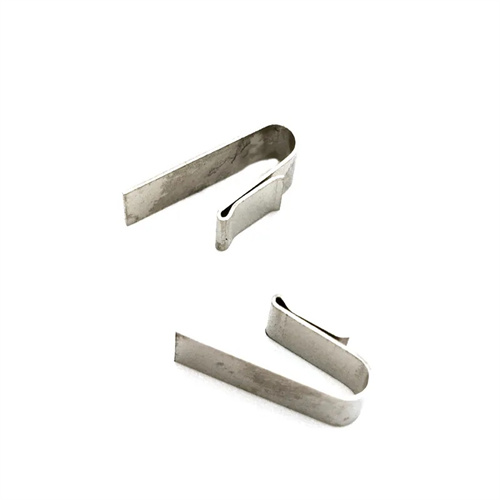Complex cross-section special-shaped steel pipe
Complex cross-section special-shaped steel pipes refer to steel pipes with non-circular cross-sections, including square, rectangular, oval, I-shaped, horseshoe-shaped, and other irregular shapes. Produced through specialized rolling or welding processes, they are widely used in building structures, machinery manufacturing, automotive manufacturing, rail transit, and other fields. They come in a variety of sizes, ranging from small square pipes with a side length of 10 mm to large special-shaped pipes with a side length of over 500 mm. With wall thicknesses of 2-20 mm, they are primarily made from carbon structural steel (Q235, Q355), low-alloy high-strength steel (Q460, Q690), and stainless steel (304, 316), meeting the strength and corrosion resistance requirements of various scenarios.

In terms of production processes, the manufacture of complex cross-section special-shaped steel pipes primarily involves hot rolling (cold drawing) and welding. Hot rolling is suitable for carbon steel and low-alloy steel. First, the round tube billet is heated to 1000-1200°C and then progressively rolled through multiple pass mills into the desired cross-sectional shape. The mill pass must be precisely designed to match the cross-sectional shape, with deformation controlled at 10%-20% per pass to ensure uniform metal flow and avoid wrinkles or cracks. Cold drawing is suitable for high-precision, small-sized special-shaped pipes. The cold-rolled round tube is cold-drawn through a specialized die, utilizing plastic deformation to achieve the shaped cross-section. Annealing (300-600°C) is required before cold drawing to maintain material plasticity, followed by low-temperature annealing to relieve stress. Welding is suitable for large or complex cross-sectional special-shaped pipes. Steel plate is first rolled into the desired cross-sectional profile. The joint is then welded using methods such as submerged arc welding (SAW) and argon arc welding (TIGW). Post-weld shaping and heat treatment are performed to ensure weld strength is ≥90% of the parent material strength and that cross-sectional dimensional accuracy meets specified standards. Regardless of the process, the finished product must undergo straightening, non-destructive testing (such as eddy current testing, ultrasonic testing) and surface treatment to ensure that the straightness error is ≤2mm/m and the weld qualification rate is ≥99%.

The performance advantages of complex cross-section special-shaped steel pipes make them highly competitive in structural and component manufacturing. First, they offer high structural rationality. Special-shaped cross-sections can be optimized based on load characteristics. For example, rectangular pipes offer superior bending resistance compared to round pipes of the same weight, saving over 30% in material. Second, they offer high space efficiency. Regular special-shaped cross-sections (such as square and rectangular) are easily arranged and combined, reducing space usage and improving layout efficiency in building frames and equipment racks. Third, they offer excellent mechanical properties. Hot-rolled special-shaped steel pipes have a tensile strength of ≥345MPa and a yield strength of ≥235MPa, enabling them to withstand complex loads such as axial force and bending moment, with uniform performance across the cross-section. Fourth, they offer high dimensional accuracy. Cold-drawn special-shaped pipes can maintain a cross-sectional tolerance of ±0.5mm and a wall thickness tolerance of ±0.1mm, meeting the assembly requirements of precision components. Fifth, they offer excellent surface quality. Surface treatments such as pickling and galvanizing significantly enhance corrosion resistance, allowing them to achieve an outdoor service life of over 15 years.

Complex cross-section special-shaped steel pipes are widely used in various applications. In the building structure sector, the steel frames of large venues are mostly made of square and rectangular special-shaped steel pipes. For example, the Bird’s Nest Stadium uses a large number of Q355 rectangular pipes with side lengths of 100-300 mm and wall thicknesses of 6-12 mm, balancing strength and aesthetics. In the automotive industry, the chassis frames of new energy vehicles use high-strength special-shaped steel pipes (Q690). These pipes are hydroformed to create complex cross-sections, reducing vehicle weight by 10%-15%. In rail transit, subway and light rail vehicle structures use aluminum alloy or stainless steel special-shaped pipes, such as elliptical and I-shaped pipes, to improve structural stability and passenger capacity. In machinery manufacturing, special-shaped steel pipes are used in the frames of textile and packaging machinery, reducing welding and processing steps and improving production efficiency. In the decoration sector, special-shaped steel pipes are processed through surface polishing and spraying to form railings and handrails, combining functionality and decorative features.

Industry trends indicate that complex cross-section special-shaped steel pipes are moving toward larger sizes, higher precision, and greater versatility. Breakthroughs in production technology for ultra-large special-shaped steel pipes have enabled the production of rectangular pipes with cross-sectional dimensions exceeding 1000mm x 500mm, suitable for use in large bridges and buildings. High-precision cold-drawn special-shaped pipes , through mold optimization and process control, maintain dimensional tolerances within ±0.1mm, making them suitable for precision mechanical components. Multifunctional composite special-shaped pipes (such as those lined with anti-corrosion coatings and those with reinforcing ribs) have expanded their application range, adapting to corrosive environments or high-load requirements. Furthermore, the promotion of green manufacturing processes, such as electric arc furnaces with shortened production processes and waste heat recovery systems, is reducing energy consumption and carbon emissions. Intelligent design software (such as finite element analysis and parametric modeling) optimizes cross-sectional shapes and further improves material utilization. With the development of steel structures and lightweight manufacturing, demand for complex special-shaped steel pipes will continue to grow, driving the industry to achieve greater progress in process innovation and product diversification.
